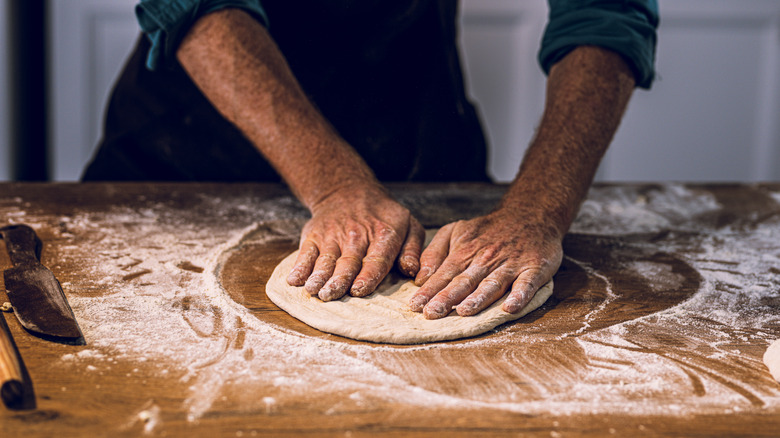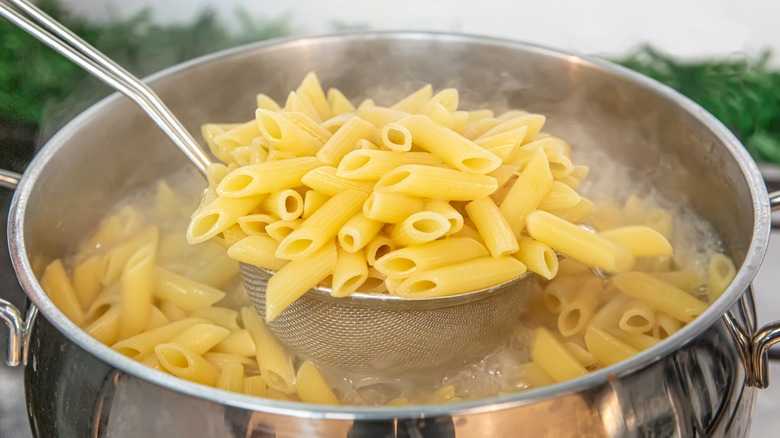Elevate Your Pizza Dough With A Bit Of Leftover Pasta Water
You're not going to make a good pizza without good pizza dough, and one of the most surprising ways to make good dough is with a little bit of pasta water. We can all argue about our favorite kinds of pizza, but whether you prefer a thin New York-style crust or a thicker Sicilian-style, two things you want out of any slice are a crisp bottom and some nice browning color. The beauty of pizza dough is the way that soft pillowy interior gives way to a crackly, flavorful outside that has enough structure to hold up wet ingredients like sauce, cheese, and oily meats. That's something you can only get with a strong, well-made dough, and that is where pasta water can give you an extra boost.
You may have heard of leftover pasta water referred to as "liquid gold" by chefs and writers, and that's because of all the starch and salt that remains in it after cooking. It has a lot of great uses, but it's especially amazing in dough where it can improve both the browning and the interior structure of your pie. Since you already need water for pizza dough anyway, it's an easy swap out, whether you want to replace all of your water or just half of it. The salt in pasta water will add some nice extra flavor too, just remember to reduce the salt from your dough recipe so you don't go overboard.
The starch in pasta water brings a litany of improvements to pizza dough
The reason pasta water is so useful in bread, including pizza dough, is because of the extra starch it adds to the dough, and how that starch interacts with heat and the gluten in wheat. Starches are carbs, and when they get cooked they break down into more simple sugars. These sugars are then cooked themselves and start to brown, forming new flavors in a process known as the Maillard reaction. Pizza dough already has carbs of course, but using pasta water acts as an extra infusion of the elements that cause browning and crisping, making the results even tastier.
And it doesn't end there. Starch provides extra sugar for yeast to eat, aiding in the rise and flavor of your dough. It also absorbs water released by gluten as it cooks, which helps keep the gluten rigid so it forms tighter bonds that keep the interior structure of your dough strong. Finally, the starch on the interior of your pizza crust, which is less exposed to heat, won't undergo the Maillard reaction and instead it will help tenderize the dough, much like adding mashed potatoes does to bread. The result is a softer interior, and a browner, crispier exterior — in other words: the perfect pizza dough. You should already be saving your pasta water when you can, but now you have pizza to motivate you even more.

